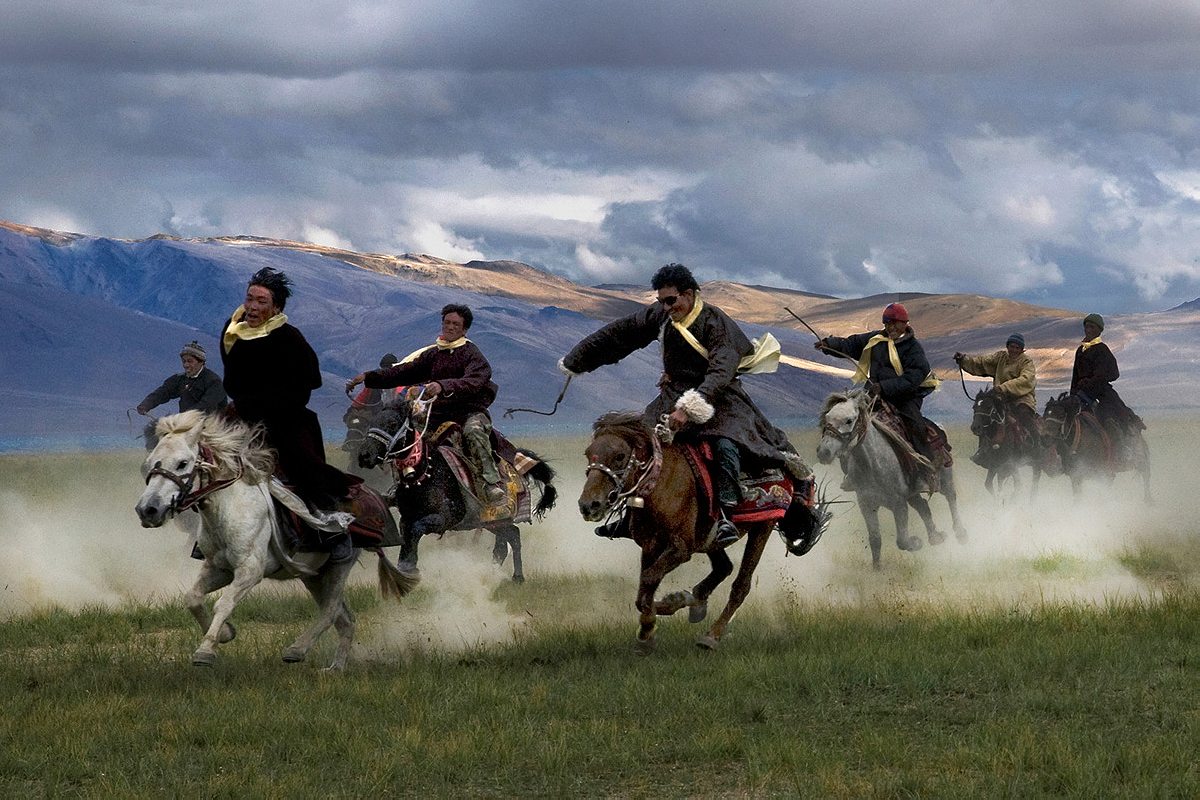An old photograph in his grandparent’s home in Calcutta had long intrigued Sugato Mukherjee. Twenty-five years later, he finally got to see Ladakh for himself.
It all started with a photograph. Hanging on the eastern wall of the living room of my maternal grandfather’s rambling mansion in Calcutta, it depicted sand-coloured textured hills and an ancient palace under a dark sky. The word Ladakh was imprinted on the right bottom in strangely shaped letters. As an eleven year old, it would remain a mystery: nobody would tell me more about Ladakh except that it was a cold desert even beyond the Himalayas.
Two and a half decades later, I chose to take the road to Leh, the capital of Ladakh, from Srinagar. With an overnight stop at an India-Pakistan border town called Kargill, followed by a navigation between two Himalayan passes, the 434 km trip takes two days.
I should say that in the two decades since I first saw that picture, Ladakh had shed much of its mystique. Leh had comfortably become a popular tourist destination, still a multi-layered cliffside city, but one with pizza parlors, bakeries and rooftop restaurants. In the touristed Leh that I saw on television or in magazines, the wizened monks in crimson robes silently walking the streets of the Buddhist city were the ones who seemed out of place.
When I finally made it there myself, I was still unable to connect the mystery of that boyhood photograph with the city in front of me. When I said as much to a schoolteacher named Sonam Yangchuk, whom I ran into at a rooftop restaurant in downtown Leh, he had just one answer: “Go to Changthang”. This was the highland home of the Changpa people, his people. There, he said, was the heart of Ladakh. And with that, he arranged for a Sumo Grande for hire: “You will need a strong 4WD, the roads are tough.”
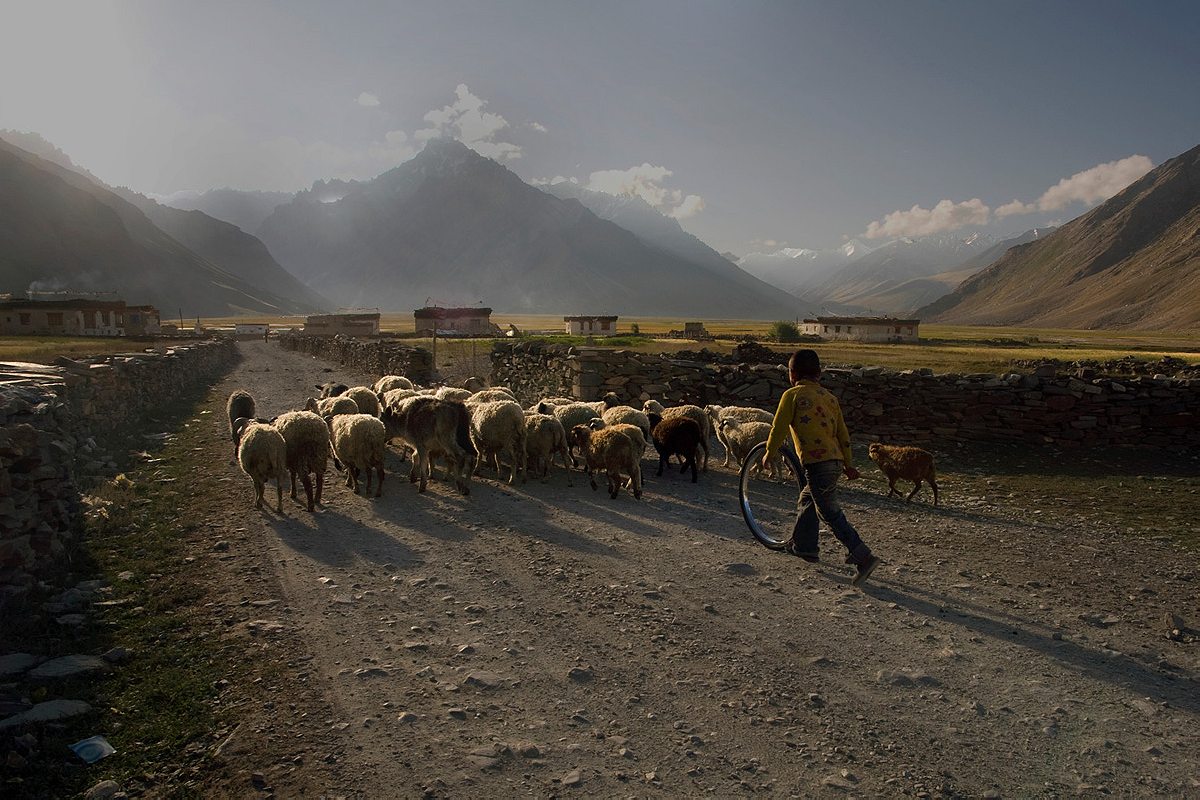
Early the next morning, I slipped past whitewashed <em>chortens</em> housing the relics of sleepy hamlets, and past the honeycomb structures of ancient monasteries, perched atop steep inclines. The short Ladakh summer was drawing to a close and temperatures at 6 a.m. were near freezing. For a while, we followed the thin Indus River, the gravelbed suggestive of its mightier past. Gradually, we went uphill, ochre turned to burgundy, and we dropped into a valley that is home to Tso Moriri lake, a 20-kilometre stretch of brilliant water surrounded by rolling sandy hills and two of Ladakh’s highest peaks.
Tso Moriri is the centerpiece of the Changthang Highlands, a majestic sweep of plateau that extends from this place in India all the way through Tibet and into China’s Qinghai Province. And though Leh, 215 km to the northeast, brims with modernity, this landscape keeps its antique allure. When, after a surprisingly warm night’s sleep in a tent on the lake (it was -4C outside), a lone rider with Tibetan saddle traversed the shore in the morning light, it was as though the photo from my distant memories had come to life.
It turns out the rider was Namgay Yangzom, a resident of Korzok, a tiny settlement by the lake. He pointed to a solitary building by the lakeside. It was, he said, built for His Holiness, the Dalai Lama, who had stayed here for a couple of nights. And another holy man, a high priest of the Drugpa order (an important sect of Tibetan Buddhism that is prevalent in Ladakh) who was visiting the local Korzok monastery. The best part: to commemorate the visit, the community was going to hold a Chaam dance and then a horse race.
What you should know about Chaam dances: like all ancient dance forms, they depict the eternal war between good and evil. What it looked like in the cobbled courtyard of the 17th century Korzok monastery: a maze of color and cloaks as three masked dancers swirled in midair in mock fights. The entire village crowded the galleries as, for two hours, the drums played and the wind instruments crescendoed in the thin air.
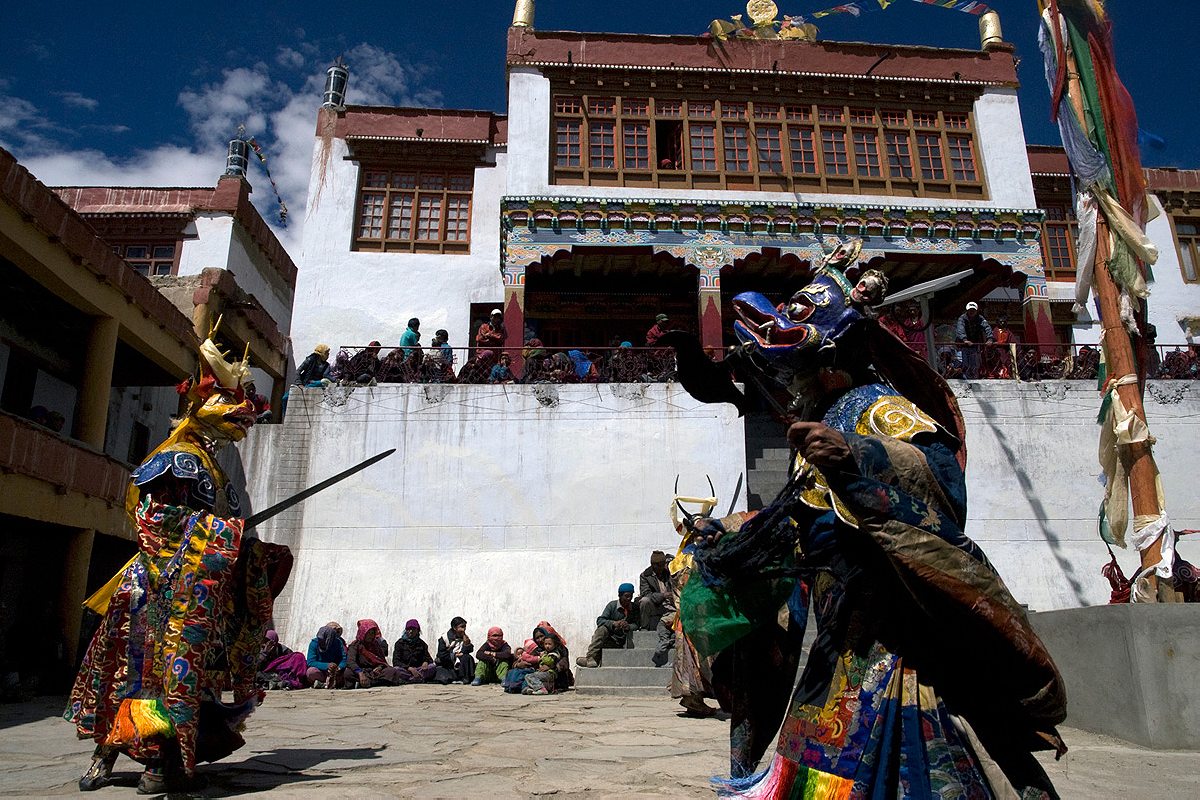
Afterwards, we retreated to a rebo (Changpa tent made of yak hair) where a Changpa woman was knitting a pashmina shawl. Her companion welcomed us with a round of piping hot butter tea (with a trace of pashmina hair floating on the pinkish liquid). The Changpas are a welcoming lot, which is fortunate. These highlands used to serve as a major trading route, but when China closed the border with Tibet, it all came to a complete halt. Tourism is now a way of life up here.
But few tourists luck into the type of day that I had. The Chaam dance was exceptional, but the horse race was the real jewel of Changpa culture. The races are ancient companions to the festivals that dot the Tibetan Buddhist calendar—beyond the prestige for the winners, the races afford the spectators rare opportunities to socialize en masse in the sparsely populated highlands.
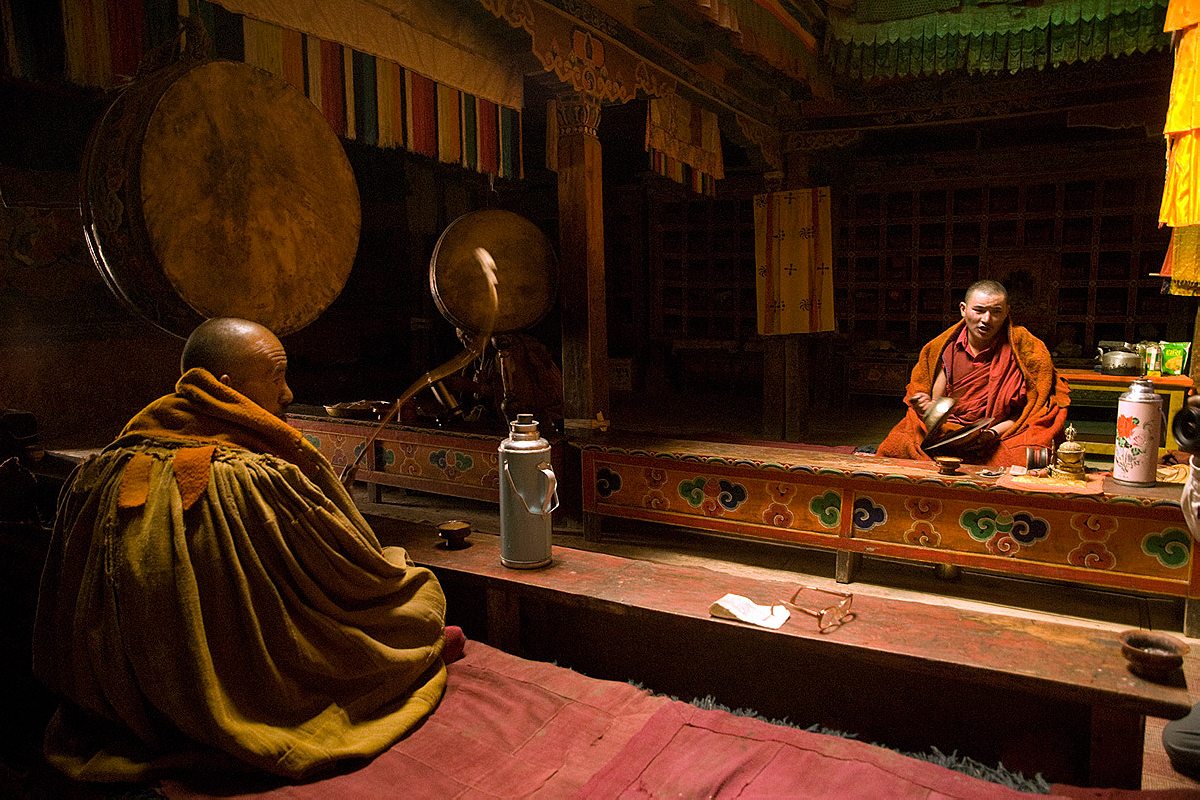
After a late lunch, I headed down toward the lake, whose flat, broad shoreline would host the event later in the afternoon. Midway, I ran into Namgay. He looked upset. “I will miss the race”, he said. Two of his pashmina lambs had gone missing in the morning and he would have to trudge uphill now, foregoing his chance of winning the prestigious horse race. It’s not just a question of losing money when he loses livestock: part of the Changpa belief system holds that a nomad’s sheep are intrinsically sacred creatures bestowed upon them by the gods of the valley.
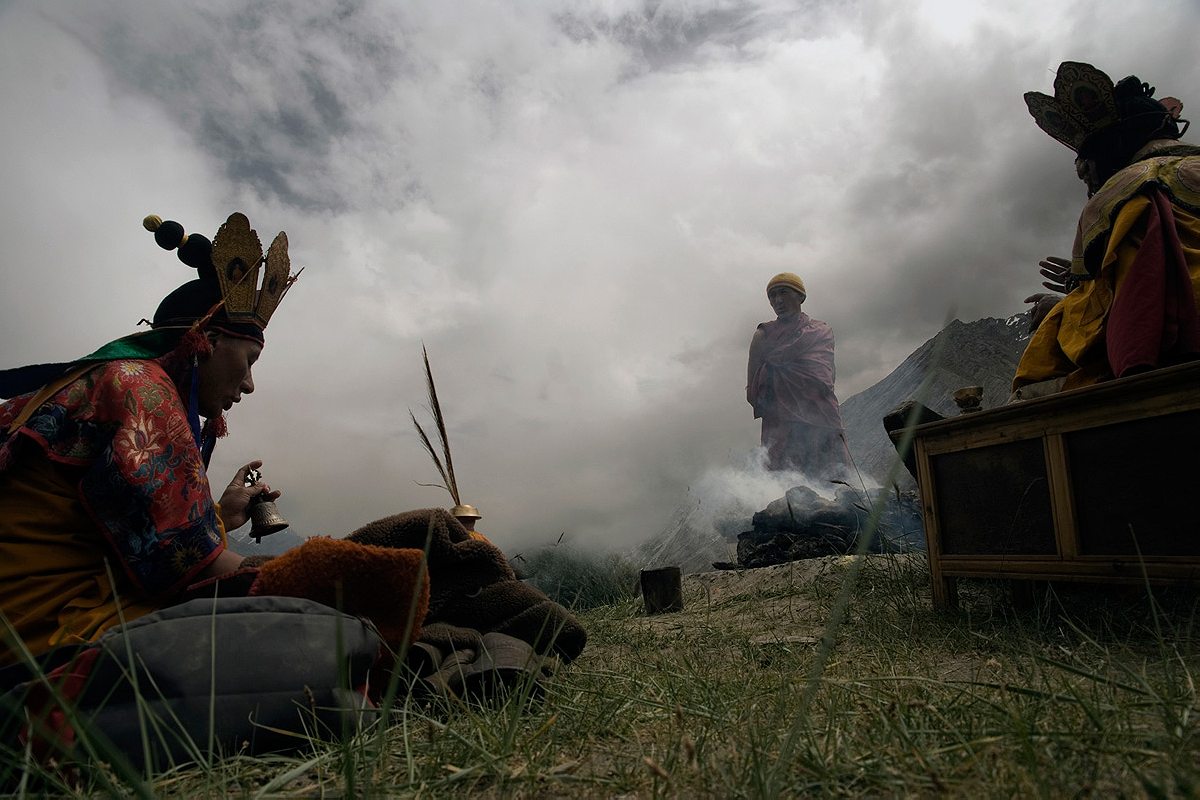
The elderly chieftain of Korzok village, in traditional riding dress, bowed before the high priest as the latter draped a white silk scarf around his neck. A boy standing next to me whispered excitedly about the ceremonial scarf. At fourteen, he was easily the youngest of the Changpa tribesmen taking part in the horse race. As such, he had to wait patiently for his turn at the end of the long line of riders to have the scarf draped on him as well.
The horses galloped back to form a distinct line against the horizon. A strong wind blew in as the trumpet blared loud and wide. And the race began under an unusually dark Ladakh sky.
